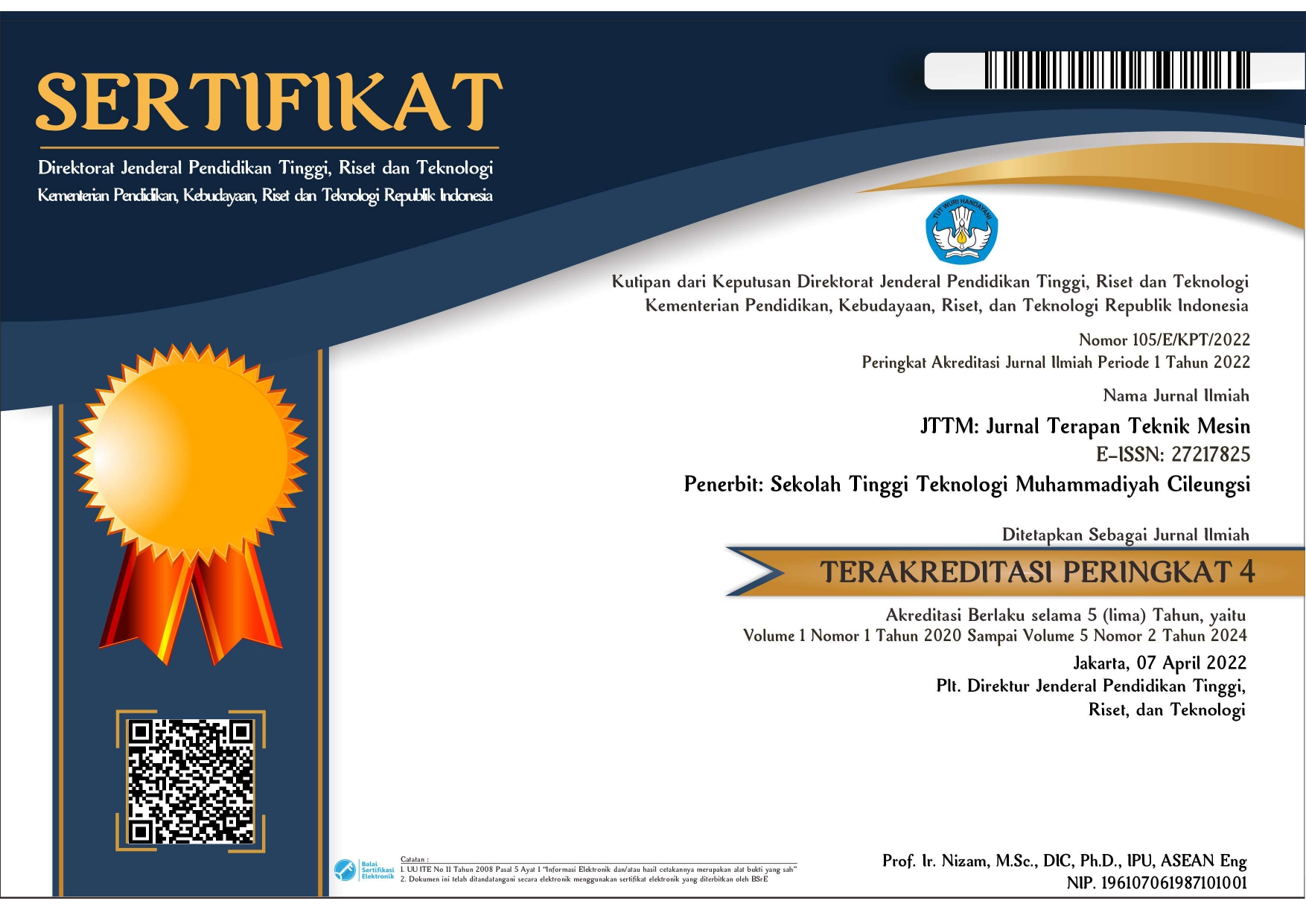Effect of air velocity variation on hardness vickers of 6061 aluminum TIG welding joints
Abstract
Aluminum 6061, a commonly used metal, demands critical attention in welding due to its mechanical properties influencing structural strength. The welding of aluminum 6061 is affected by various factors, including air velocity conditions during the welding process. This research objectives to analyze Vickers hardness values in TIG-welded Aluminum 6061. The research focuses on TIG welding of aluminum 6061, analyzing the impact of air velocity variations in the welding environment on hardness values. The experimental design considers air velocity variations at 3.6 km/h, 4 km/h, and 5 km/h during TIG welding of aluminum 6061. Specimens from each research variable undergo Vickers hardness testing to analyze the correlation between air velocity variations and Vickers hardness values. Research findings reveal specimen 1 with an average hardness of 96 HV, specimen 2 at 105 HV, and specimen 3 at 110 HV. These differences depict hardness variations among specimens, emphasizing the complexity of air velocity variations' effect on welded joints' hardness. Hardness testing results consistently show the lowest hardness values at point number 2, while the highest values for specimens 1 and 2 are at point number 6. However, specimen 3 exhibits the highest hardness at point number 8. The research concludes that air velocity variations in the welding environment significantly impact hardness values in the welding results. Vickers hardness testing indicates an increase in hardness values with increasing air velocity, highlighting a proportional relationship between air velocity variations and hardness values
Copyright (c) 2024 Riyan Ariyansah, Dan Mugisidi

This work is licensed under a Creative Commons Attribution-NonCommercial 4.0 International License.











